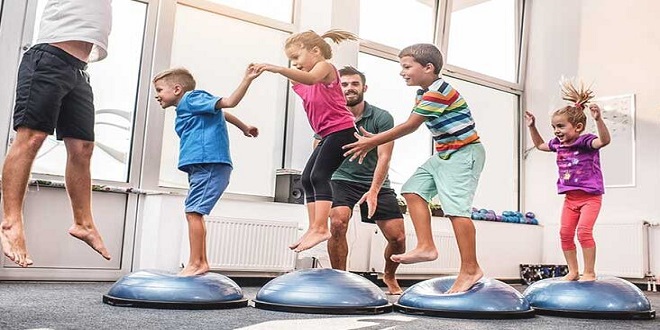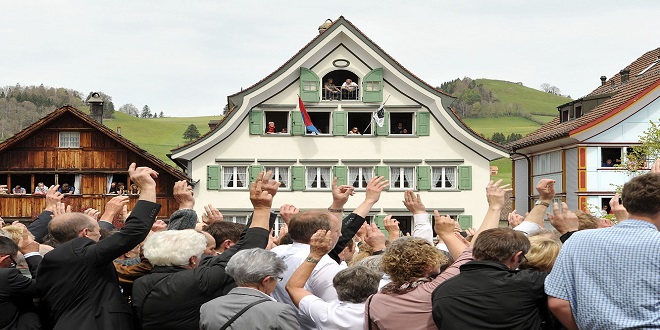Approaches to Physical Education in Schools

Physical education in the context of schooling
Physical education became a subject matter in schools in the 19th century. Its role in human health was quickly recognized. By the turn of the 20th century, personal hygiene and exercise for bodily health were incorporated in the physical education curriculum as the primary learning outcomes for students. However, the exclusive focus on health was criticized by educator Thomas Wood as too narrow and detrimental to the development of the whole child. The education community subsequently adopted Wood’s inclusive approach to physical education, whereby fundamental movements and physical skills for games and sports were incorporated as the primary instructional content. During the past 15 years, physical education has once again evolved to connect body movement to its consequences, teaching children the science of healthful living and skills needed for an active lifestyle.
Physical Education as Part of Education
In institutionalized education, the main goal has been developing children’s cognitive capacity to learn knowledge in academic disciplines. This goal dictates a learning environment where seated learning behavior is considered appropriate, effective, and rewarded. Physical education as part of education provides the only opportunity for all children to learn about physical movement and engage in physical activity. As noted, its goal and place in institutionalized education have changed from the original focus on teaching hygiene and health to educate children about the many forms and benefits of physical movement, including sports and exercise.
Curriculum Models
Given that curricula are determined at the local level in the United States, encompassing national standards, state standards, and state-adopted textbooks that meet and are aligned with the standards, physical education is taught in many different forms and structures. Various curriculum models are used in instruction, including movement education, sports education, and fitness education. In terms of engagement in physical activity, two perspectives are apparent. First, programs in which fitness education curricula are adopted effectively increase in-class physical activity. Second, in other curriculum models, physical activity is considered a basis for students’ learning skills or knowledge that the lesson is planned for them to learn. Unfortunately, a lack of nationally representative data is available to demonstrate the relationship between the actual level of physical activity in which students are engaged and the curriculum models adopted by their schools.
Movement Education
The movement has been a cornerstone of physical education since the 1800s. Early pioneers focused on a child’s ability to use their body for self-expression. Exemplary works and curriculum descriptions include those by Laban himself. Over time, however, the approach shifted from concern with the inner attitude of the mover to a focus on the function and application of each movement. In the 1960s, movement education intended to apply four-movement concepts to the three learning domains. The four concepts were body; space; effort (the quality with which the movement is executed); and relationships. The importance of exercise in physical education is evidenced by its inclusion in the first two NASPE standards for K-12 physical education.
Sport Education
One prevalent physical education model is the sports education curriculum designed by Daryl Siedento. The goal of the model is to “educate students to be players in the fullest sense and help them develop as competent, literate, and enthusiastic sportspersons.” The model entails a unique instructional structure featuring sports seasons used as the basis for planning and teaching instructional units. Students are organized into sports organizations (teams) and play multiple roles as team managers, coaches, captains, players, referees, statisticians, public relations staff, and others to mimic a professional sports organization. A unit is planned for a sports season, including preseason activity practice, regular-season competition, playoffs and tournaments, championship competition, and a culminating event. Depending on the developmental level of students, the games are simplified or modified to encourage maximum participation. In the round, students play the roles noted above and the part of players.
Fitness Education
Instead of focusing exclusively on having children constantly move to log activity time, a new curricular approach emphasizes teaching them the science behind why they need to be physically active in their lives. The curriculum is designed so that the children are engaged in physical activities that demonstrate relevant scientific knowledge. The goal is the development and maintenance of individual student fitness. In contrast with the movement education and sport education models, the underlying premise is that physical activity is essential to a healthy lifestyle. Students’ understanding of fitness and behavior change results from engagement in a fitness education program. The conceptual framework for the model is designed around the health-related components of cardiorespiratory fitness, muscular strength and endurance, and flexibility. A recent meta-analysis suggests that physical education curricula that include fitness activities can significantly increase the amount of time spent. in vigorous- or moderate-intensity physical exercise.
Write a book report for informative reports that discuss a book from an objective stance. They are similar to book reviews but focus more on a summary of the work.
Summary
Physical education is a formal content area of study in schools. It is standards-based and encompasses assessment according to standards and benchmarks. Special curriculum-based physical education programs have been described in this chapter to show the potential of high-quality physical education in developing children into active adults. Such models provide the only opportunity for all school-age children to access health-enhancing physical activities. Curriculum models for physical education programs include:
- Movement education emphasizes the importance of fundamental motor skills competence as a prerequisite for physical activity throughout the life span.
- Sports education emphasizes helping students become skillful players in lifetime sports of their choosing.
- Fitness education imparts physical fitness concepts to students, including the benefits and scientific principles of exercise, to develop and maintain individual fitness and positive lifestyle change.





